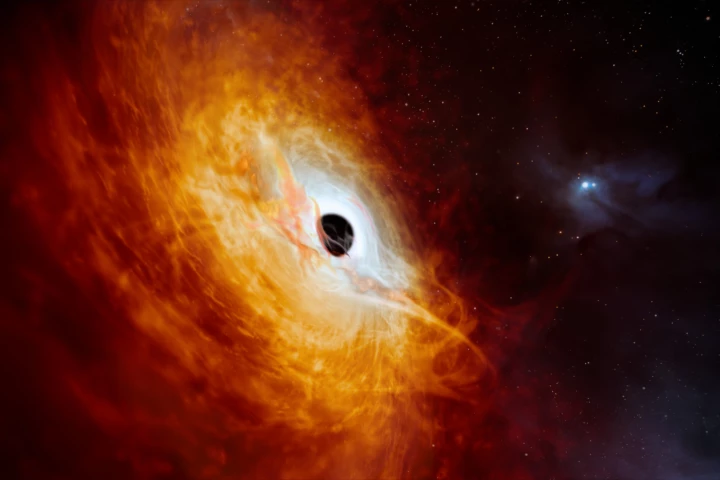ESO
-
The Sun is the biggest fish in our small pond of a solar system, but it’s a mere minnow compared to the whales that dwell out in the cosmos. New telescope images show a gigantic star casually blowing bubbles 75 times bigger than our Sun.
-
In a few billion years, the Sun will destroy the solar system’s inner planets – and if it’s lucky, it might get a big cool scar to brag about. That’s what happened to a newly found white dwarf, which appears to have a bizarre metal scar on its surface.
-
The brightest object in the known universe has just been found. It's a supermassive black hole with the mass of 17 billion Suns, and it swallows another Suns’ worth of material every day, making it also the fastest-growing black hole ever found.
-
2023 turned out to be a busy year in space and the general vicinity. New Atlas looks back at everything from rocket launches and cosmic tsunamis to asteroid samples and the latest astronaut fashions.
-
You can breathe easy and take the sticky tape off the windows because the solar system won't be hit by the rogue white dwarf WD 0810-353 in 29,000 years. ESO’s Very Large Telescope (VLT) shows that early calculations were a bit off.
-
Astronomers have discovered a new type of star, which could be key to solving a cosmic mystery. This massive helium star has an ultra-strong magnetic field, meaning it could be the preliminary stage of a magnetar, which so far has unknown origins.
-
Astronomers using an array of 66 radio telescopes have discovered what may be the first example of a star with two exoplanets circling it that share the same orbit, something that was thought to be theoretically possible but never seen until now.
-
Able to detect gravitational waves and visible light sources, ESO's BlackGEM telescopic array at La Silla Observatory in Chile is on the hunt for ripples in space-time. And unlike existing observatories, it can pinpoint where they're coming from.
-
Astronomers from the Event Horizon Telescope Collaboration have today revealed the first image of the supermassive black hole at the center of the Milky Way galaxy, produced using a network of radio telescopes around the world.
-
Astronomers may have detected a new exoplanet around Proxima Centauri, the star closest to our solar system. This tiny new world is one of the lightest ever discovered, which is even more impressive given the technique the team used to find it.
-
Astronomers have discovered the closest known pair of supermassive black holes – and that record has two meanings. Not only are they the closest pair to Earth, but they’re the closest to each other as well, heading for an eventual monster merger.
-
Astronomers have captured the first clear images of a colossal moon-forming debris disk orbiting a distant alien planet. According to the authors of the new study, the disk has enough material to create three satellites the size of Earth’s Moon.
Load More











